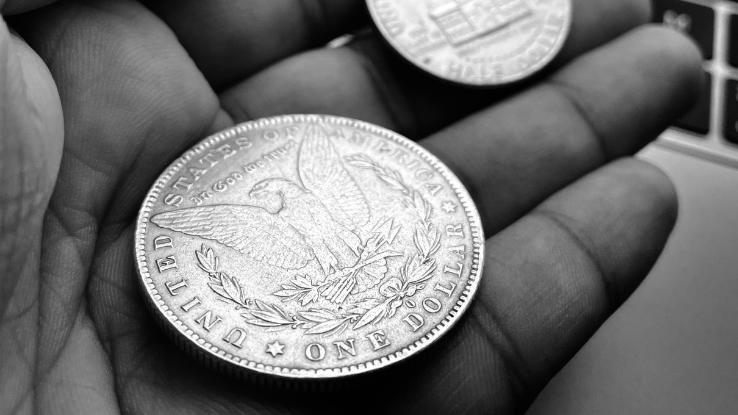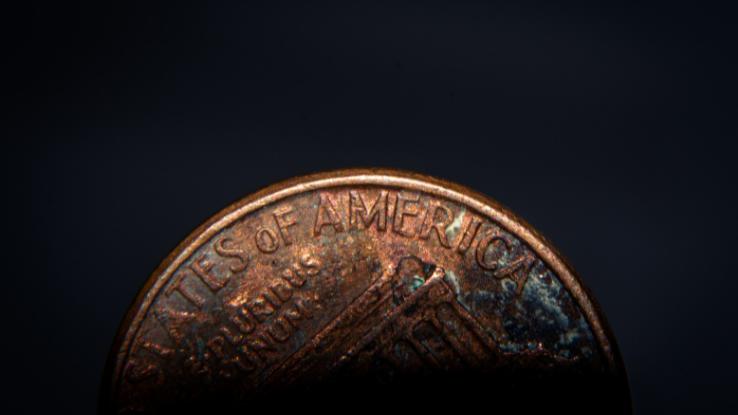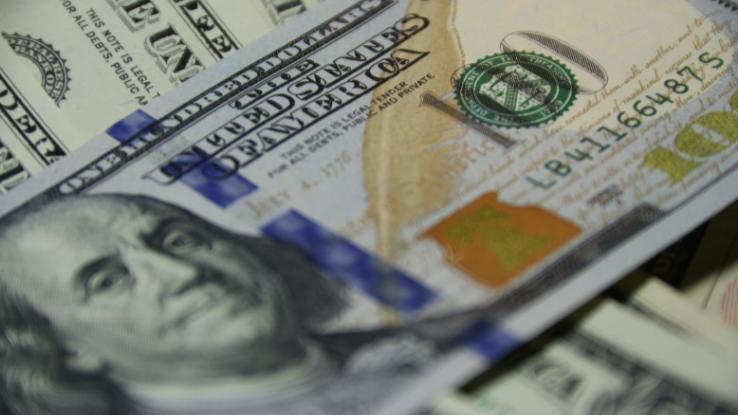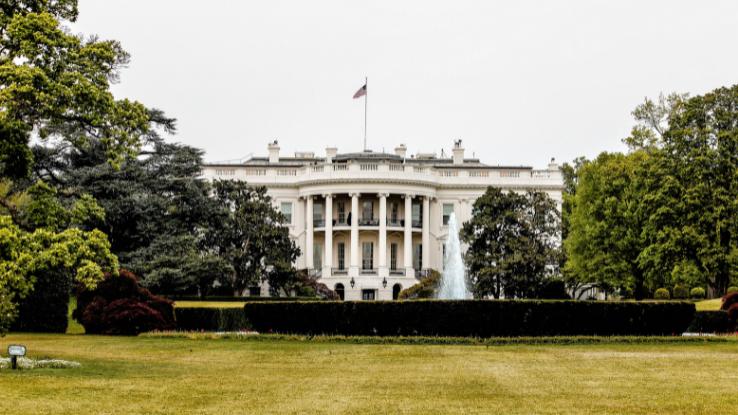And Yet Here It Is Your Face Again

If yous paid for something in cash recently, you may not have received the full corporeality of change that was owed to you lot. In fact, some retailers had to put a temporary agree on cash transactions in general. The reason for this, like many other inconveniences in the concluding few years, stemmed from the COVID-xix pandemic. When businesses aren't able to utilize cash for legal tender, a fiscal domino event occurs, and vulnerable people tend to be afflicted the about.
The proverbial salt in the wound is that the U.Due south. has safety nets and regulations in place to protect our currency in a money shortage, and throughout history, the The states has had to adjust the ways its coins are made and how many are produced. The coin supply chain issues we've recently faced should be considered less of a failure on the behalf of the U.South. Mint in item and more than of a reason to acknowledge the severity of COVID-19 and the problems it caused.
The U.S. Money Job Strength was established last year — which was probably not on anyone's 2020 bingo menu. To learn more about this task force, protective legislation to prevent coin supply chain issues and other efforts to make sure everyone has the coins they need, read on beneath.
Get That Money: A Cursory Wait at Coinage in U.S. History
Since the late 1700s, there have been eight major Federal Coinage Acts implemented to regulate coinage and establish the U.S. Mint. Periodically the U.Due south. needs to reevaluate its coin system to better facilitate economical transactions. Part of this involves the U.S. making physical changes to its money, which it does through coinage acts. Theoretically, if at that place was a demand or even a want, Congress could laissez passer an deed that stops the employ of different materials like copper or nickel in our money product. The Government could also create new coins with new values.

Here is a quick breakup of several of import U.Due south. coinage acts:
The Coinage Act of 1792 established the U.Due south. Mint. Prior to this, Americans used Continental currency, which needed an overhaul. Different states were using different currencies, and some people were also using foreign money. A standardized national currency was needed. Coins ranged from ha'pennies (one-half a cent) to "gold eagles" that were worth $10 each at the fourth dimension. Newspaper money had been in use since the 1690s, just it was mostly used in credit or I.O.U. scenarios.
The 19th century brought modify to American money. The Coinage Deed of 1834, signed past Andrew Jackson, reestablished the weights of certain coins. The Coinage Human action of 1849 added 2 gold coins — the aureate dollar and the $twenty double eagle — into the mix, which was largely made possible thanks to the California Gold Rush. The Coinage Act of 1853 lowered the amount of silvery in coins in response to an ongoing silver shortage. The Coinage Deed of 1857 prevented strange currency from existence used every bit legal tender, encouraging folks to exchange foreign currencies, and the Coinage Human activity of 1864 brought a 2 cent coin into circulation. The lowering of silverish content and newly introduced currencies were both implemented to assist fund the United states of america Ceremonious State of war.
The Coinage Act of 1873 was more of a game-changer. Prior to this signal, the U.Due south. embraced "bimetallism" and based the worth of its currency on the bodily values of both silver and golden. This act again lowered the silver content in U.Southward. coins and ended the practice of tying coins' values to silver, ultimately leading the land to follow the "gilded standard" organization and abandon bimetallism.
The Coinage Act of 1965 dealt specifically with money shortages. Coming out of the Great Depression, the United States was experiencing prosperity unlike ever earlier. Coins were used for everything from payphones to schoolhouse lunches.
But, at that place was a silver shortage. It grew so extensive that people began hoarding quarters and dimes the same way some people hoarded toilet paper in 2020. This meant that the Mint needed to ramp up production of these disappearing coins to keep them in circulation, and information technology introduced one-half-dollar coins and "silver dollars" as cease-gaps. These coins were composed of multiple metals, including nickel to give them a argent advent, and known as "clad coins." These new coins were added to the apportionment of currency, and quarters and dimes were no longer made with any silverish, effectively ending the shortage caused past hoarding. Silver-colored coins are still made the aforementioned fashion today: with copper and nickel.
Despite all of these protections put in place over time, the U.Southward. still has not quite perfected the production and circulation of money. The nation has fabricated it fifty years without needing another coinage human activity, simply 2020 brought the U.S. very close. This could signify that in that location's a diminishing demand for coins with so many people now going digital and using less newspaper coin. But information technology's important to remember that, no matter how technologically avant-garde nosotros get, there will always be a need for concrete currency.
Make no mistake — if a coin shortage happens because of prosperity or hard times, it is still a bad matter for everyone. Yeah, it's easier than ever to be fully digital with all of your money. Only, non everyone is able to maintain a bank account and instead may need to rely primarily on using cash. Differently-abled people may take trouble accessing banks. Folks in lower-income neighborhoods are more likely to have to travel farther to get to a bank, so banking comes with higher financial and time costs for them. Banking fees can outweigh the benefits of a bank for many people, too.
The Opposite of Cash-Just: The COVID-19 Scramble of 2020
When "lockdown" began in March of 2020, no one knew how long the COVID-nineteen pandemic would concluding. A few weeks turned into a month — and then a twelvemonth. During that time, there were a number of different shortages because supply was unable to meet need in a multifariousness of ways. People were hoarding toilet paper from Costco, ownership up weight sets and stockpiling everything else, from ammunition to Crocs.

Fewer people were going out and spending. Even fewer people were working in financial institutions that helped continue the regular circulation of currency flowing at its typical pace. Retailers across the country were running out of alter across the board. Quarters, dimes, pennies — all of it was running out.
A notable percent of folks believed that the money shortage was intentionally caused by the government. People were so upset and potentially frightened by the coin shortage that some believed the government was belongings on to all the coins as a first step in transforming the country into a cashless society.
This is not true. The authorities insists that the shortage happened due to closures across the country, with the Federal Reserve explaining, "business and bank closures associated with the COVID-19 pandemic significantly disrupted the supply chain and normal circulation patterns for U.Due south. coins. This slowed the footstep of circulation and reduced available inventories in some areas of the country during 2020." People weren't able to work in person at banks to go on the money circulating. Those banks and most other businesses weren't open for their normal number of hours, and some weren't open at all.
Think nearly all the restaurants and bars that closed downward due to the pandemic. Even those that reopened weren't moving as much physical currency every bit before, especially change. Delivery apps like DoorDash and Grubhub became the norm, and tipping in cash felt similar a thing of the by. It didn't assistance that plenty of folks were intentionally not using coins in lodge to prevent the spread of germs. The federal coin shortage got to the point where it needed special intervention: its very own task force.
The U.S. Money Task Strength and Coins for Tomorrow
In July 2020, the U.S. Money Task Force was formed to tackle the issue head-on. The group consisted of folks like Patrick Hernandez, the Deputy Director of the U.S. Mint; Ashley Yayock of Walmart, representing retailers; and folks from the Federal Reserve Banks in San Francisco and Atlanta like Kathleen Young, Amy Burr and Jeff Thomas. Their first move was a phone call to action in the summer of 2020.

The task forcefulness urged Americans to spend their spare change and commutation coins at dropoff machines. Equally fourth dimension went on, the group compiled different resource for dissimilar types of businesses struggling with the COVID-19 pandemic. These include resources for retailers, supply chains and financial institutions — and fifty-fifty resource for families and kids. The task strength likewise developed applied strategies to promote coin redemption and money spending and provided these resources online.
In 2021, the chore force has begun reallocating coins in case any institutions are in need of them. Production has ramped upwardly, so in that location should be plenty coins for everyone for now. Despite the shortage, more coins were produced in 2020 than in 2019, if you can believe it. In 2020, the U.S. produced $14.8 billion in coins. In 2019, only $11.seven billion worth of coins were produced, and so at that place are more than now that are set up to be circulated.
Regarding the current coin state of affairs, things seem to be on rail. Hopefully, as the earth continues to get vaccinated and reopen, shortages like these can level out. Amend yet, perchance nosotros'll find a cleaner way to exchange currency down the route. Until then, make sure you spend and salvage your coins. They may be worth something someday, and they may get more handy if nosotros experience some other coin shortage.
Source: https://www.reference.com/business-finance/what-is-coin-shortage?utm_content=params%3Ao%3D740005%26ad%3DdirN%26qo%3DserpIndex

0 Response to "And Yet Here It Is Your Face Again"
Post a Comment